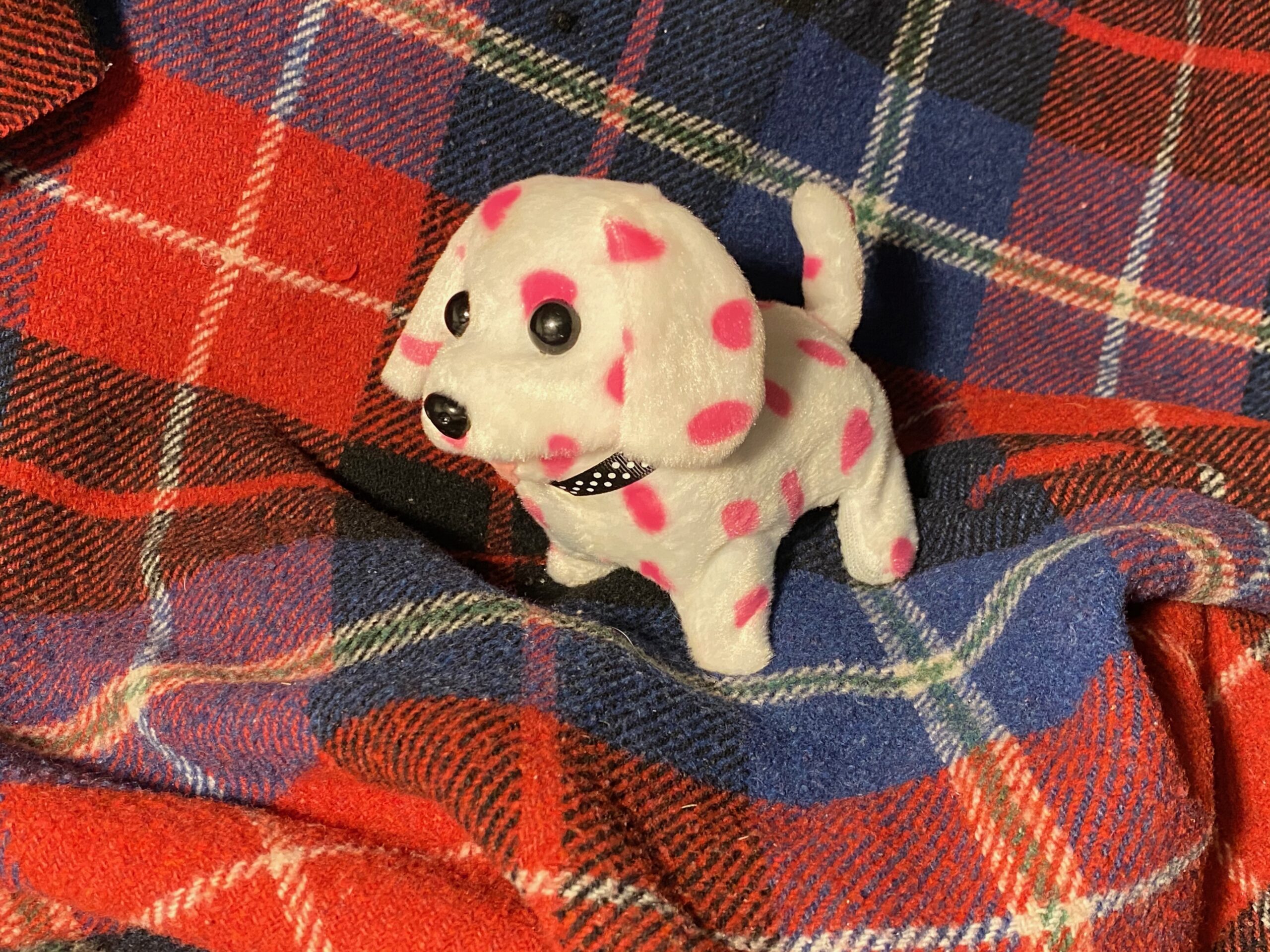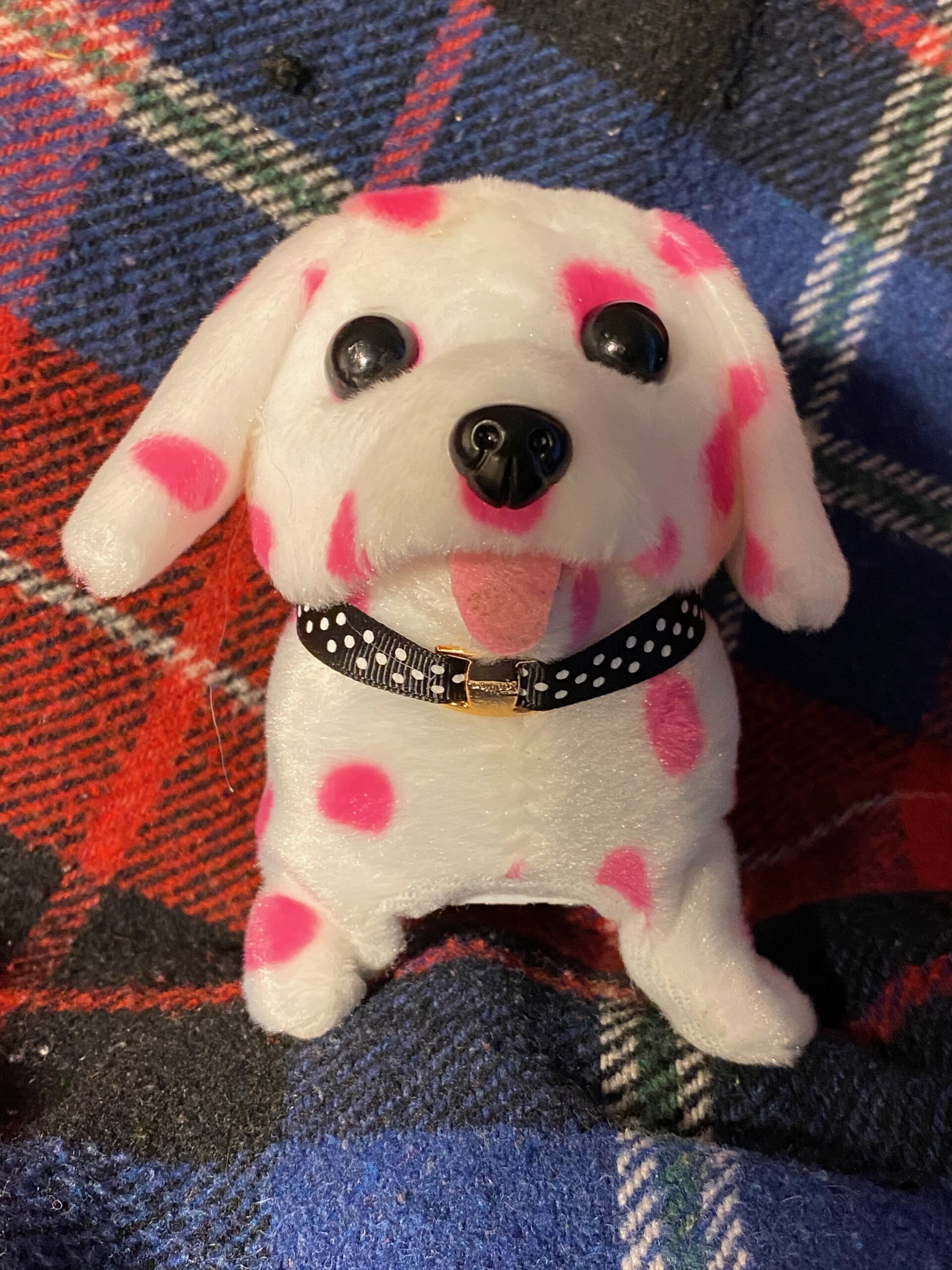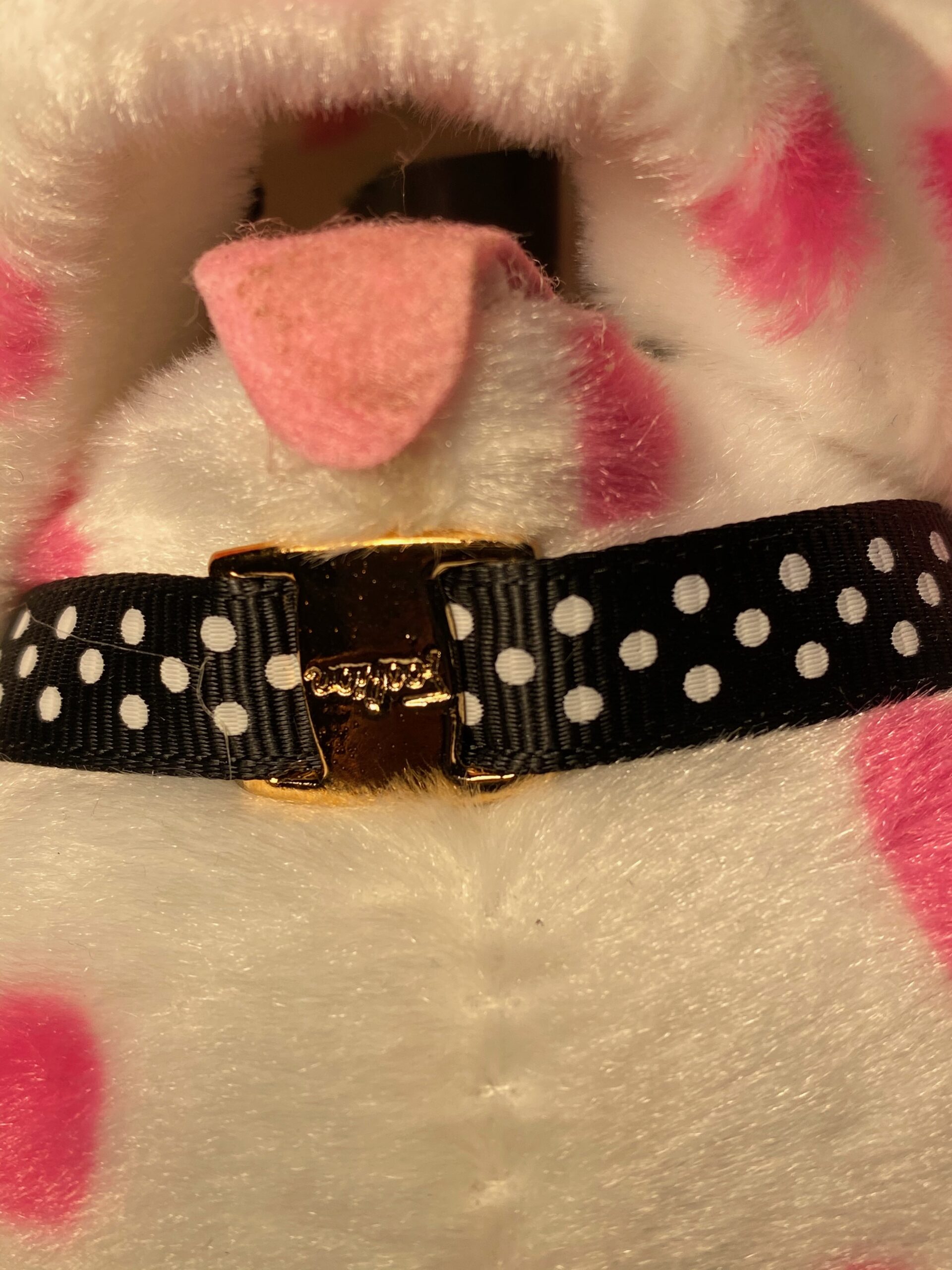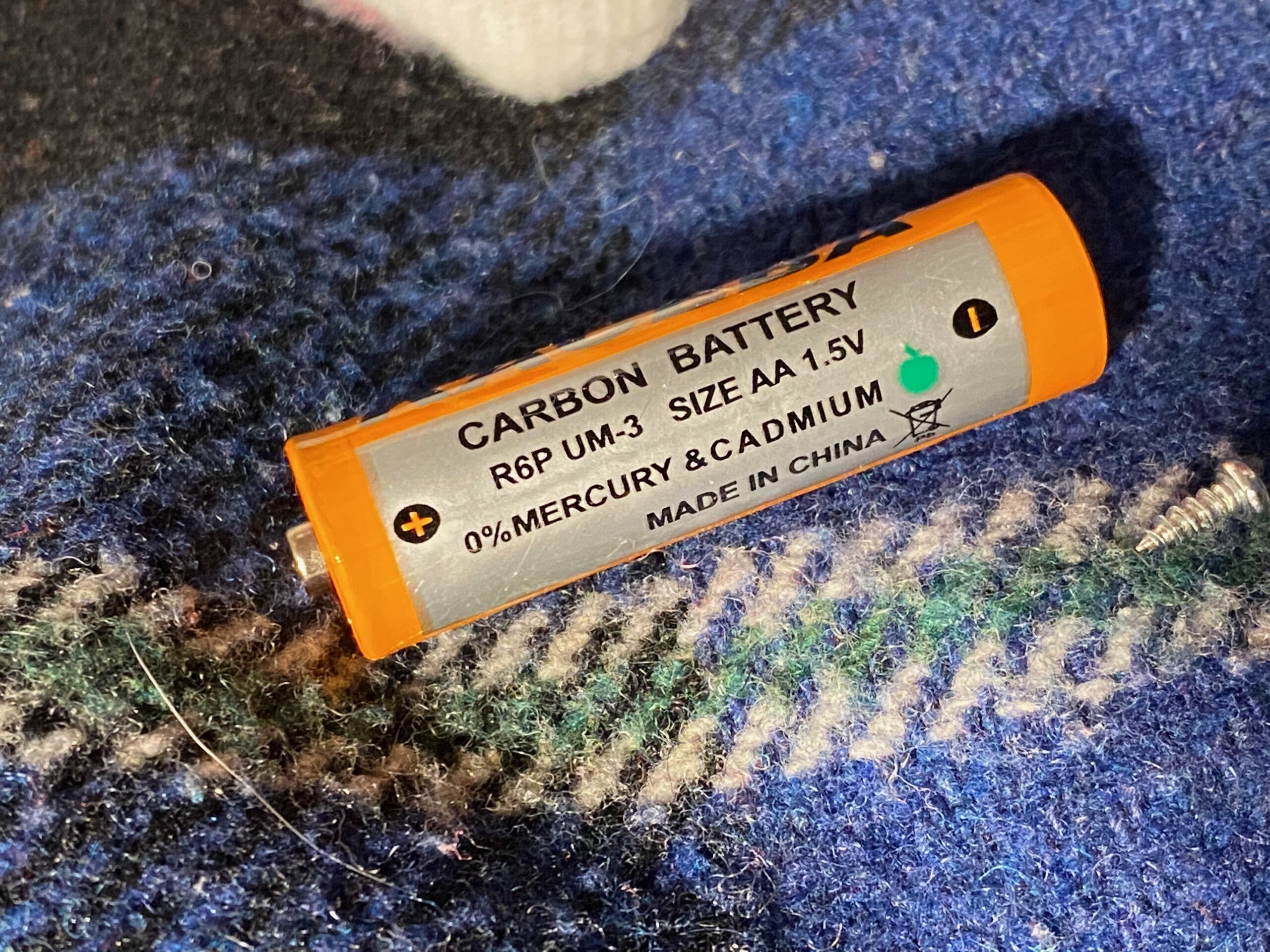ABC Trading animatronic pink polka dot toy dog: 69 ppm Lead + 337 ppm Antimony.
Introduction: Tamara Rubin is an independent advocate for consumer goods safety, and she is also a mother of Lead-poisoned children. She began testing consumer goods for toxicants in 2009 and was the parent-advocate responsible for finding Lead in the popular fidget spinner toys in 2017. She uses high-precision XRF testing (a scientific method used by the Consumer Product Safety Commission) to test consumer goods for metallic contaminants – including Lead, Cadmium, Mercury and Arsenic.
Stay Safe Out There!
A quick note from Tamara
Hey readers – I hope you are staying well out there with all that is going on in the world right now. I’m hanging out mostly at home with my children – and have been doing so for more than three months now (since March 2nd.) Each of my three youngest sons (I have four sons total!) have compromised immune systems (which manifests in different ways for each of them), due to having been Lead-poisoned as babies.
In between kid-wrangling I am working hard to publish literally HUNDREDS of new posts (with test results for various consumer goods I have tested over the past couple of years, but have not yet had a moment to report on!). These posts have created a backlog in my system for more than a year now – and it’s actually nice to have a *break* with some time to catch up! To make this happen as quickly as possible, I am (as with this post) simply posting the images and the test results – without a lot of additional information. [Do not worry — I will continue to update them with more information as I get caught up and begin to have the time!]
For those new to my website, please check out the menu in the header of the website for more information about how I test things (and my background, etc.) On each post you can also click on any of the keyword tabs at the top of the post to find more items in that category. Here’s the post discussing the type of testing I do, and the specific instrument I use to detect, analyze and confirm metals content, and ultimately produce the resultant data for each item reported here – link.
Please Note: Test results reported below are science-based, accurate, and replicable. Test results reported here are from tests that were done for a minimum of 60 seconds each, and repeated multiple times, to confirm the results. As with all the testing reported here on my blog, a freshly-calibrated high-precision XRF instrument testing in Consumer Goods mode was used to test the item pictured here.
As always, please let me know if you have any questions.
Thank you for reading and for sharing my posts!
Tamara Rubin
#LeadSafeMama
Please continue reading below the short video of the dog in action!
All accessible components tested without disassembling the toy.
#1) White area of fur of dog (near tail):
(Presence of Lead is likely due to instrument reading through to internal electronics)
- Lead (Pb):18 +/- 8 ppm
- Antimony (Sb): 337 +/- 42 ppm
- Bromine (Br): 593 +/- 19 ppm
- Zinc (Zn): 133 +/- 18 ppm
- Nickel (Ni): 27 +/- 17 ppm
- Iron (Fe): 753 +/- 68 ppm
- Titanium (Ti): 5,137 +/- 265 ppm
#2) Pink area of fur of dog (on ear):
- Antimony (Sb): 173 +/- 29 ppm
- Zinc (Zn): 14 +/- 9 ppm
- Nickel (Ni): 19 +/- 11 ppm
- Iron (Fe): 103 +/- 28 ppm
- Titanium (Ti): 4,477 +/- 245 ppm
Please continue reading below the image.
 #3) White plastic case of batteries:
#3) White plastic case of batteries:
Tested in place (presence of Lead is likely due to instrument reading through to internal electronics)
- Lead (Pb): 46 +/- 9 ppm
- Cadmium (Cd): 20 +/- 13 ppm
- Barium (Ba): 353 +/- 138 ppm
- Antimony (Sb): 76 +/- 33 ppm
- Bromine (Br): 17 +/- 5 ppm
- Gold (Au): 405 +/- 40 ppm
- Zinc (Zn): 4,499 +/- 111 ppm
- Iron (Fe): 150 +/- 32 ppm
- Titanium (Ti): 616 +/- 137 ppm
#4) Red on-off-switch:
- Zinc (Zn): 260 +/- 21 ppm
- Copper (Cu): 386 +/- 27 ppm
- Nickel (Ni): 25 +/- 14 ppm
- Iron (Fe): 9,960 +/- 187 ppm
- Titanium (Ti): 269 +/- 59 ppm
Please continue reading below the image.
 #5) Eyeballs of dog:
#5) Eyeballs of dog:
- Barium (Ba): 189 +/- 86 ppm
- Zinc (Zn): 107 +/- 8 ppm
- No other metals detected
Please continue reading below the image.
 #6) Nose of dog:
#6) Nose of dog:
- Zinc (Zn): 96 +/- 8 ppm
- No other metals detected
Please continue reading below the image.
 #7) Golden buckle of dog collar:
#7) Golden buckle of dog collar:
- Lead (Pb): 69 +/- 12 ppm
- Arsenic (As): 14 +/- 6 ppm
- Antimony (Sb): 1,845 +/- 49 ppm
- Bromine (Br): 7,614 +/- 101 ppm
- Zinc (Zn): 116 +/- 11 ppm
- Iron (Fe): 306 +/- 31 ppm
- Vanadium (V): 253 +/- 146 ppm
- Titanium (Ti): 1,583 +/- 147 ppm
- Chlorine (Cl): 1,988 +/- 852 ppm
#8) Black ribbon of dog collar:
- Lead (Pb): 43 +/- 19 ppm
- Antimony (Sb): 115 +/- 49 ppm
- Bromine (Br): 109 +/- 16 ppm
- Zinc (Zn): 112 +/- 34 ppm
- Iron (Fe): 368 +/- 116 ppm
- Titanium (Ti): 13,600 +/- 500 ppm
- Chlorine (Cl): 16,300 +/- 1,300 ppm
Please continue reading below the image.

 #9) Battery (tested separately, along side of battery):
#9) Battery (tested separately, along side of battery):
- Antimony (Sb): 80 +/- 41 ppm
- Cadmium (Cd): 38 +/- 24 ppm
- Gold (Au): 5.422 +/- 1,652 ppm
- Zinc (Zn): 462,300 +/- 3,800 ppm
- Vanadium (V): 1,471 +/- 671 ppm
- Titanium (Ti): 7,286 +/- 395 ppm
- Chlorine (Cl): 523,000 +/- 3,700


Never Miss an Important Article Again!
Join our Email List



 #3) White plastic case of batteries:
#3) White plastic case of batteries: #5) Eyeballs of dog:
#5) Eyeballs of dog: #6) Nose of dog:
#6) Nose of dog: #7) Golden buckle of dog collar:
#7) Golden buckle of dog collar:
 #9) Battery (tested separately, along side of battery):
#9) Battery (tested separately, along side of battery):

Do you think in general this is the case with most battery powered toys? As far as the lead and antimony? I understand antimony is used as a “fire retardant”
In your experience with this testing, would you conclude that most stuffed animals are high in these heavy metals and toxins? Should we get rid of all of them to decrease our kids’ contact? Thanks